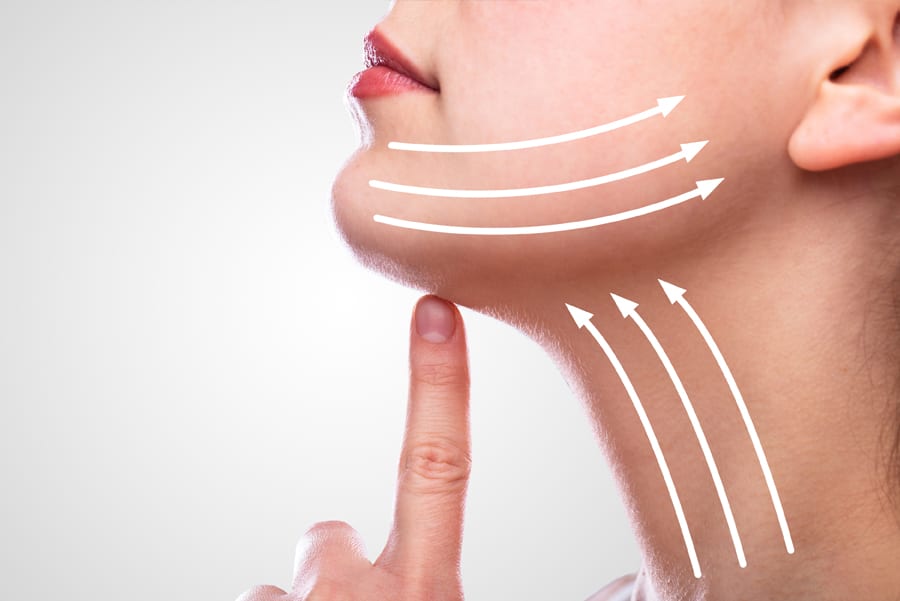Surgical and Minimally Invasive Options for Lifting the Lower Face
As with any procedure, it is important for the plastic surgeon to address more than just the surface. As noted above, skin is not the only tissue impacted by time and ever-present natural forces. This means that tightening only the skin can yield undesirable results since the underlying structures would still be slumped and shifted. Think of it as tugging a top sheet tight while the linen layers below are still bunched up around the bottom of the bed. The result is a less-than-uniform look.
Facelift surgery, then, involves tightening the surface along with deeper structures for a harmonious result. The surgery may involve removing excess tissue, as well as adding in carefully positioned and refined measures of fat to restore volume in key areas. After all, a youthful face is not flat and severe, but pleasantly rounded, with support structures that hold tissues in an elevated position.
In some cases, youth or a prior facelift are still on a patient’s side, though some moderate laxity has begun to appear. For these instances, Dr. John Q. Cook may recommend FaceTite®, a less-dramatic treatment that focuses specifically on skin laxity along the jawline and on the neck.
FaceTite requires a few small incisions that allow a probe to be inserted. The device heats the skin and causes contraction for the sleeker look of improved definition.
Not every patient is suited for one option or the other. The best way to move forward is to schedule a consultation and allow Dr. Cook to perform an evaluation. By determining the degree of laxity and sagging, as well as learning the scope of a patient’s hoped-for results, he can determine the best options for addressing signs of aging on the lower half of the face.
Contact the Whole Beauty® Institute to arrange a virtual consultation with Dr. John Q. Cook and learn more about the available options for facial rejuvenation.



